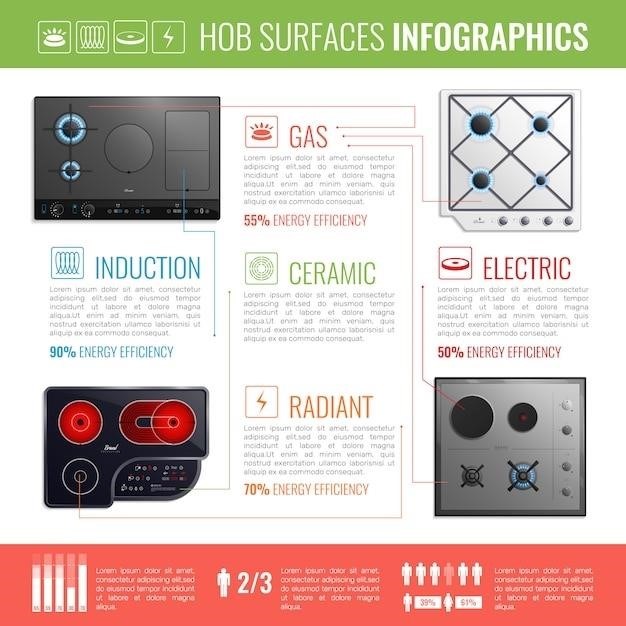Electric Wheelchair Manual⁚ A Comprehensive Guide
This manual provides essential information for safe and effective electric wheelchair operation. Learn about various models‚ controls‚ maintenance‚ troubleshooting‚ and safety procedures. Master your wheelchair’s features and ensure a smooth‚ reliable experience. Consult the manufacturer’s manual for specific details.
Electric wheelchairs offer increased independence and mobility for individuals with limited physical capabilities. These power-assisted chairs provide a convenient and efficient alternative to manual wheelchairs‚ significantly reducing the physical strain associated with propulsion. A wide range of models cater to diverse needs and preferences‚ from lightweight‚ foldable designs ideal for transport to robust‚ heavy-duty chairs suitable for outdoor use. Understanding the features and functionalities of your specific electric wheelchair is crucial for safe and efficient operation. This manual will guide you through the essential aspects of using your electric wheelchair‚ covering everything from basic operation to advanced features and maintenance procedures. Proper use and regular maintenance will ensure your wheelchair remains reliable and provides years of safe and dependable service. Remember to always prioritize safety and follow the manufacturer’s instructions carefully.
Types of Electric Wheelchairs and Their Features
Electric wheelchairs come in various designs to meet diverse user needs and preferences. Standard wheelchairs offer a balance of features and affordability‚ while heavy-duty models provide greater stability and durability for outdoor use. Lightweight and foldable wheelchairs are designed for easy transport and storage‚ making them ideal for users who require portability. Transport chairs prioritize ease of transport over maneuverability‚ often lacking advanced features. Power-assisted wheelchairs combine the benefits of manual and electric operation‚ allowing for both powered and manual propulsion. Advanced features vary greatly depending on the model and manufacturer. Consider factors such as seat width and depth‚ backrest height‚ and armrest type for optimal comfort and support. Joystick controls are the most common‚ but alternative control systems like sip-and-puff or eye-gaze technology are available for users with limited hand mobility. Suspension systems‚ adjustable height and tilt‚ and various accessories further enhance the functionality and comfort of electric wheelchairs. Careful consideration of these factors will ensure selection of the ideal model for individual needs.
Understanding Your Wheelchair’s Controls and Operation
Familiarize yourself with your electric wheelchair’s control system before operating it. Most models utilize a joystick for directional control‚ allowing for precise movement. Understanding the joystick’s sensitivity and responsiveness is crucial for safe operation. Many models offer adjustable speed settings‚ enabling users to customize their driving experience. Learn how to adjust the speed and acceleration to suit your comfort level and the environment. The power switch is typically located on the controller‚ and it must be turned on before the wheelchair can operate. Emergency stops are essential safety features—locate them and know how to use them to immediately halt the wheelchair in an emergency. Some models incorporate additional controls such as horn activation‚ headlight operation‚ and seat adjustments. Review the specific controls and functions detailed in your wheelchair’s user manual. Practice maneuvering the wheelchair in a safe‚ open space before using it in unfamiliar environments. Mastering the controls takes time and practice‚ but it’s essential for safe and confident operation. Regularly check the functionality of all controls to ensure they are working correctly. If you experience any issues‚ consult your user manual or contact the manufacturer for assistance.
Safe Operation and Maintenance Procedures
Prioritize safety when operating your electric wheelchair. Always ensure the area is clear of obstacles before moving. Avoid inclines exceeding the wheelchair’s specified capacity; steep inclines can cause instability or damage. Maintain a safe distance from other people and objects‚ allowing sufficient space for maneuvering. When using the wheelchair outdoors‚ be aware of traffic and use caution when crossing streets or navigating busy areas. Regularly inspect the wheelchair’s tires for wear and tear and ensure they are properly inflated. Check all connections and fastenings to ensure they are secure. Clean the wheelchair regularly with a damp cloth and mild detergent. Avoid using harsh chemicals or abrasive cleaners that could damage the finish. Store the wheelchair in a dry‚ protected area when not in use to prevent rust or damage from environmental conditions. The battery requires careful handling. Always refer to the manufacturer’s instructions for charging and maintenance procedures. Avoid overcharging the battery‚ as this can reduce its lifespan. Never attempt to repair or modify the wheelchair’s electrical components yourself unless you have the necessary expertise. If any issues arise‚ consult a qualified technician or contact the manufacturer for assistance. Regular maintenance and safe operating practices will extend the life of your wheelchair and ensure your safety.
Troubleshooting Common Issues
If your electric wheelchair fails to operate‚ first check the battery charge. A low battery is a frequent cause of malfunctions. Ensure the battery is properly connected and that the charging port is clean and free from debris. If the battery is adequately charged and the wheelchair remains unresponsive‚ inspect the power switch and controller connections. Loose connections can interrupt the power supply. If the wheelchair moves erratically or makes unusual noises‚ consult your user manual for guidance on possible causes and remedies. In some cases‚ a simple adjustment or cleaning might resolve the problem. If the wheelchair still isn’t functioning correctly‚ avoid further attempts at self-repair. Improper adjustments could worsen the issue or cause damage. Contact the manufacturer or a qualified repair technician for professional assistance. Attempting complex repairs without proper training and tools can be dangerous and void any warranty. Before seeking professional help‚ document the issue as precisely as possible—note any error codes‚ unusual sounds‚ or specific behaviors observed. This detailed information will help the technician diagnose and repair the problem efficiently. Remember‚ safety is paramount‚ so never operate a malfunctioning wheelchair until it has been properly inspected and repaired by a qualified professional.
Battery Care and Charging
Proper battery care is crucial for optimal performance and longevity. Always use the charger provided by the manufacturer; using an incompatible charger can damage the battery and void warranties. Before charging‚ inspect the battery terminals and charging port for any dirt or debris. Clean them gently with a dry cloth. Fully charge the battery before each use‚ especially if it hasn’t been used for an extended period. Consult your user manual for the recommended charging time; overcharging can shorten the battery’s lifespan. Avoid completely depleting the battery; try to recharge it before it reaches a critically low state. Store the battery in a cool‚ dry place when not in use‚ and never leave it exposed to extreme temperatures. The battery’s lifespan is affected by temperature; prolonged exposure to high heat can significantly reduce its capacity. Regularly check the battery for any signs of damage‚ such as swelling‚ leaks‚ or loose connections. If you notice any abnormalities‚ discontinue use immediately and contact the manufacturer or a qualified technician. Follow the manufacturer’s recommendations for battery replacement; using an incorrect replacement can be hazardous and may invalidate your warranty. Remember‚ proper battery care is essential for safe and reliable wheelchair operation.
Regular Maintenance and Cleaning
Regular maintenance is key to ensuring your electric wheelchair’s optimal performance and longevity. Begin by regularly inspecting all parts for wear and tear. Check tires for proper inflation and look for any cuts or damage. Examine the frame for cracks or loose components. Clean your wheelchair regularly using a damp cloth and mild detergent. Avoid harsh chemicals or abrasive cleaners that could damage the surface. Pay close attention to areas that tend to accumulate dirt‚ such as the wheels‚ frame‚ and seat. After cleaning‚ dry the wheelchair thoroughly to prevent rust and corrosion. Lubricate moving parts as needed‚ following the manufacturer’s recommendations. This usually involves applying a small amount of lubricant to hinges and joints to ensure smooth operation. Inspect and clean the controller regularly‚ removing any dust or debris that may accumulate. Check all electrical connections to ensure they are secure and free from corrosion. Regularly inspect the battery terminals for corrosion or damage. If you find any‚ clean them gently with a wire brush and baking soda paste. If you’re unsure about any maintenance procedure‚ consult your user manual or contact a qualified technician. Regular maintenance will not only extend your wheelchair’s lifespan but also ensure its safe and reliable operation.
Advanced Features and Technologies
Modern electric wheelchairs incorporate advanced features enhancing user control and comfort. Many models offer sophisticated joystick controls with customizable settings for speed and responsiveness. Some even integrate advanced electronics like Bluetooth connectivity‚ allowing for remote monitoring and control via a smartphone app. Consider the inclusion of power-adjustable features for seat height‚ tilt‚ and recline‚ significantly improving seating posture and comfort during extended use. Enhanced suspension systems provide smoother rides over uneven terrain‚ reducing vibrations and improving stability. Advanced safety features may include anti-tip wheels‚ emergency braking systems‚ and seatbelts for added security. Intelligent power management systems optimize battery usage and extend operational range. Some wheelchairs incorporate advanced sensors and software for obstacle detection and avoidance‚ increasing safety and independence. Consider the availability of various seating and positioning options tailored to individual needs‚ promoting better posture and comfort. For specific information about advanced features on your model‚ refer to the manufacturer’s detailed user manual. These technological advancements aim to maximize user comfort‚ safety‚ and overall quality of life.
Safety Precautions and Emergency Procedures
Prioritize safety when operating your electric wheelchair. Always inspect the chair before each use‚ checking for any loose parts‚ tire pressure‚ and battery status. Familiarize yourself with all controls and features before operating the wheelchair independently. Maintain awareness of your surroundings‚ avoiding obstacles and uneven surfaces. Never exceed the wheelchair’s weight capacity or recommended speed limits. Use caution on inclines and declines‚ adjusting speed and technique accordingly. Always wear the seatbelt provided for added security‚ especially during transport or on uneven terrain. In the event of a malfunction‚ immediately turn off the power and contact your wheelchair provider or manufacturer. Keep emergency contact information readily accessible. Understand your wheelchair’s emergency braking system and how to use it effectively. If encountering an emergency‚ activate the emergency stop mechanism. Regularly review safety procedures and guidelines to ensure safe operation. Proper maintenance and adherence to safety recommendations minimize the risk of accidents and malfunctions. For comprehensive safety guidelines specific to your model‚ refer to the manufacturer’s detailed user manual.
Accessing Manufacturer Manuals and Support
Your electric wheelchair’s manufacturer provides crucial resources to ensure safe and efficient operation. Locate your manufacturer’s website; most offer downloadable user manuals in PDF format‚ often searchable by model number. These manuals contain detailed instructions on assembly‚ operation‚ maintenance‚ troubleshooting‚ and safety procedures. Should you require assistance beyond the manual‚ many manufacturers provide dedicated customer support channels. This may include phone numbers‚ email addresses‚ or online contact forms. When contacting support‚ have your wheelchair’s model number readily available to expedite the process. Some manufacturers offer online forums or communities where users can share experiences‚ ask questions‚ and receive peer-to-peer support. Consider checking for frequently asked questions (FAQs) sections on the manufacturer’s site before contacting support. This can often resolve common issues quickly. Remember to retain your purchase documentation and warranty information‚ as this may be required when contacting support for repairs or warranty claims. Proactive access to manufacturer resources ensures you have the support needed for optimal wheelchair use and longevity.

